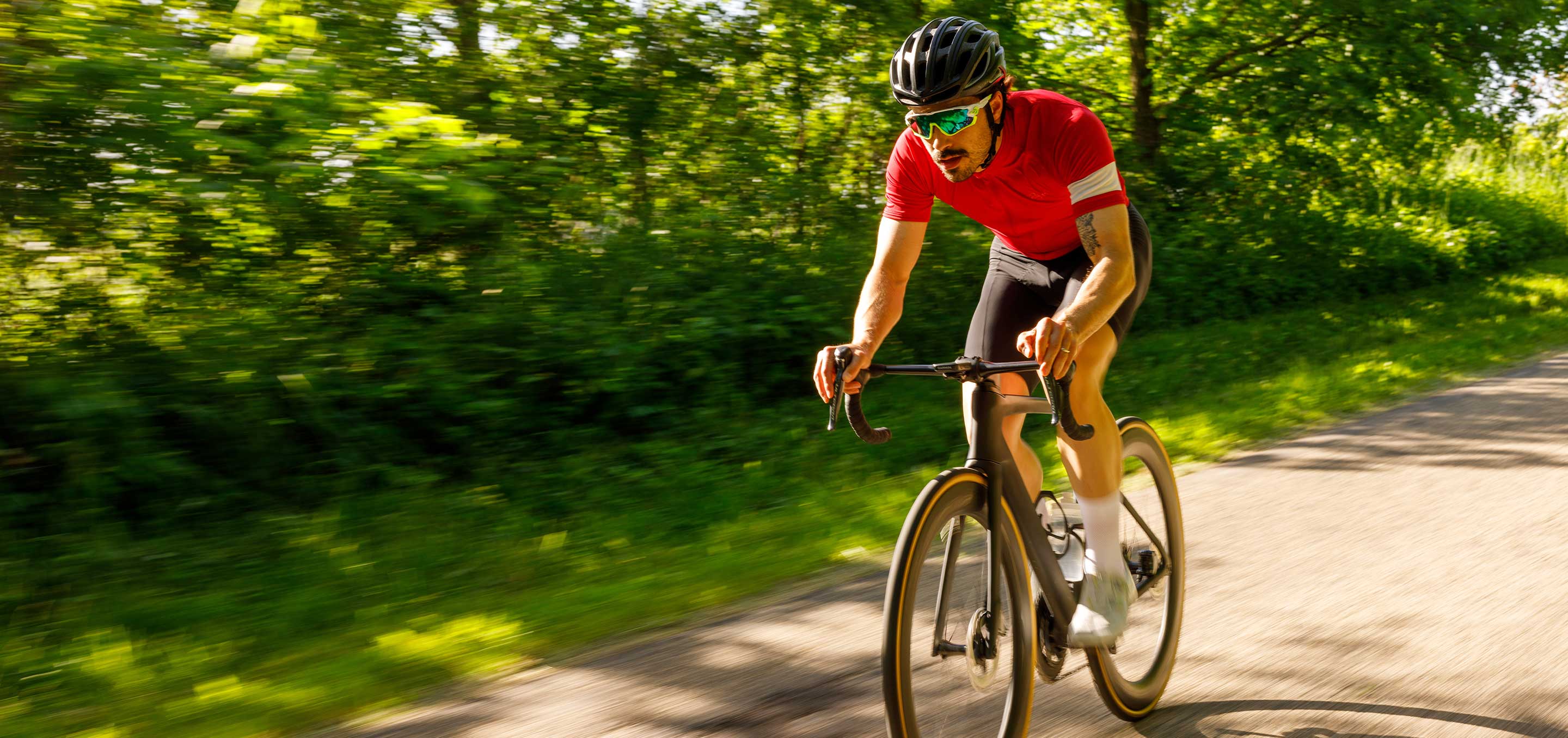The Most Common Foot Injuries for Runners
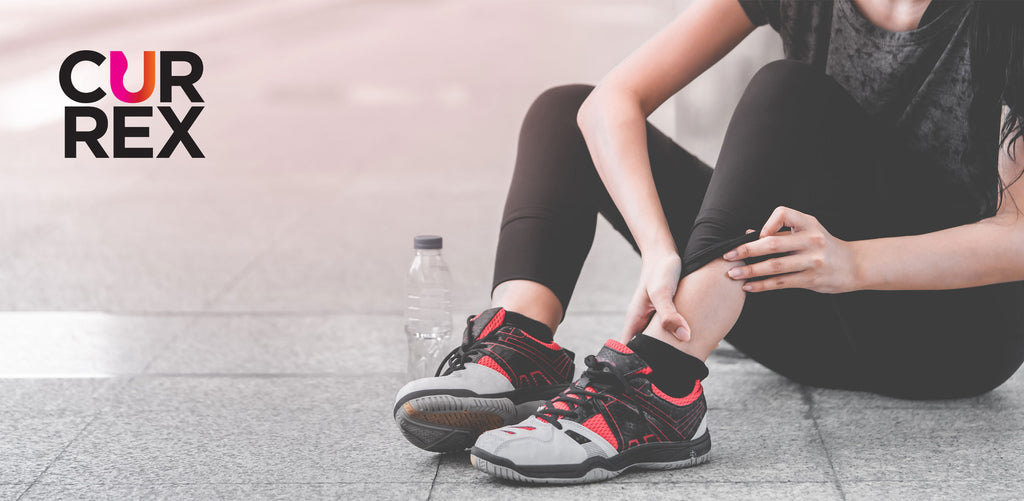
5 Common Running Injuries That Affect Your Feet
Running is a fully-body workout, although most of the initial impact is on your feet. With every foot strike, your feet take a pounding. This amount of repetitive force makes runners more vulnerable to injuries or pain that affects the feet and lower body.
CURREX® insoles were rated the #1 insole brand in comfort and foot pressure relief. Technologically advanced and designed for the needs of runners, they’re also the bestselling insoles in the U.S. run specialty market.
CURREX RUNPRO™ insoles were made for runners to improve their performance, plus help protect them from common running and foot injuries. If you have ball of foot pain after running, CURREX METPAD insoles deliver much-needed comfort in your daily shoes.
Learn more about the most common foot injuries for runners, how to prevent them, and which insoles are the best for injury avoidance, comfort, and performance.
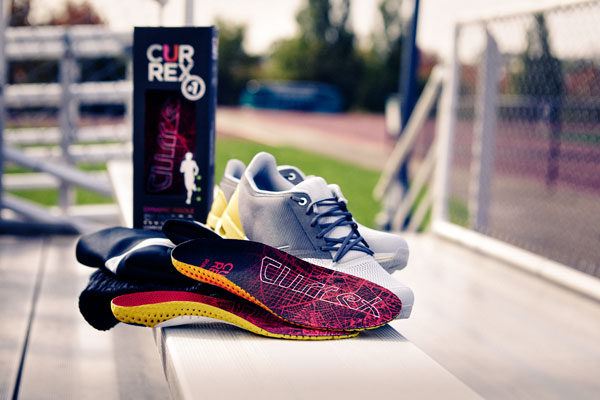
What are common foot injuries faced by runners?
At some point in their running journey or career, runners are likely to sustain at least one foot or ankle injury. Whether it’s an irritating blister or Achilles pain, most injuries will put your daily run on hold.
According to research under the Netherlands Organization for Health Research and Development, about 80 percent of running injuries are overuse injuries. Most of these injuries affect the feet, lower legs and upper legs. Common foot injuries for runners include blisters, ankles sprains, plantar fasciitis, stress fractures to the balls of the feet and more.
1. Blisters
Though nothing serious, a blister can quickly ruin a great run. The combination of moisture from sweat and excessive friction inside the shoe softens the skin, leaving high pressure points like the heels, toes or balls of the feet vulnerable to blisters.
PREVENTION: Your running shoes should fit properly with enough toe room, good midfoot support, and heel control. CURREX RUNPRO insoles offer customized arch support and a perfect fit to reduce excess motion while a mesh top layer helps manage moisture to prevent blisters.
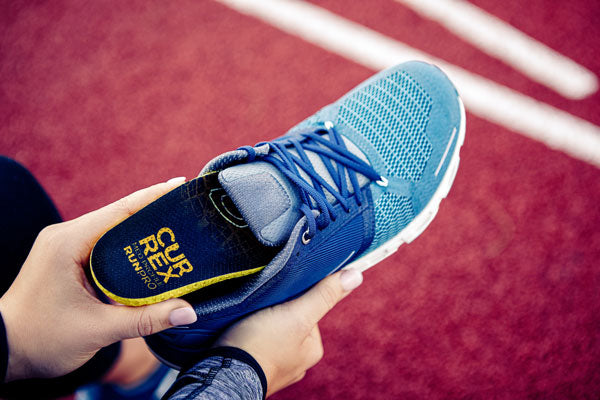
2. Plantar Fasciitis
One of the most common overuse injuries in runners is plantar fasciitis. The plantar fascia is a thick band of tissue connecting your heel bone to your toes, helping form your arch. The repetitive force of running overstretches this tissue, causing microtears that lead to sore, aching heel or arch pain.
PREVENTION: Plantar fasciitis exercises and stretches will help strengthen the plantar fascia. Running insoles like CURREX RUNPRO feature adaptable arch support and shock absorbing cushioning that help minimize impact and distribute pressure more evenly.
3. Metatarsalgia & Stress Fractures
The metatarsals are a collection of bones located in the balls of the feet that link the ankles to your toes. Most of your body’s weight transfers to the forefoot area when running, putting excessive pressure on the metatarsals. This causes them to be easily strained, causing inflammation and, sometimes, a stress fracture.
Characterized by burning, swelling, tingling or numbness, metatarsal injuries including metatarsalgia often happen when you increase your running distance, frequency, or speed too soon.
PREVENTION: Strengthening your lower legs and feet, stretching, massaging the forefoot, and altering your running foot strike may help prevent ball of foot pain from running.
For additional relief plus ball of foot comfort, CURREX METPAD insoles have a metatarsal cushion that lifts the forefoot and distributes pressure evenly to relax the foot. They make good insoles for ball of foot pain whether you’re a runner, walker, or need everyday relief.
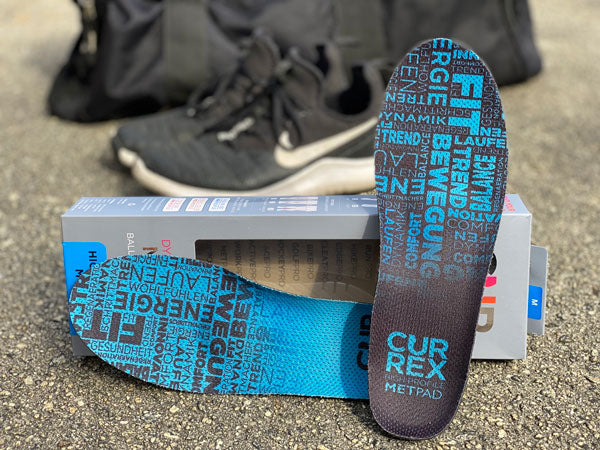
4. Morton’s Neuroma
Morton’s Neuroma is a common foot injury caused by repetitive pressure on the forefoot while running. Usually, a nerve in the metatarsal region gets trapped between metatarsal bones and a ligament, causing swelling, inflammation, and pain.
The tissue around the affected nerve thickens, and you might feel like you have a rock stuck in your shoe. Runners with high arches, forefoot strikers, and runners wearing narrow shoes are most vulnerable to Morton’s Neuroma.
PREVENTION: When your ball of foot hurts when running due to Morton’s Neuroma, prevention steps include stretching your feet and wearing running shoes with a wide toe box, arch support, and extra cushioning.
CURREX METPAD insoles are the best insoles for ball of foot pain after running because they offer highly customized arch support for all arch types, help improve performance regardless of foot strike, and have a metatarsal pad for ball of foot comfort and relief.
5. Ankle Sprains
Running on uneven ground or slipping can cause you to twist or sprain your ankle. Trail runners face this problem especially on rough terrain, but it can also happen due to weakened ankles or instability. A sprained ankle may be swollen, bruised, stiff, and make it difficult to move.
PREVENTION: Stretching and strengthening the muscles and ligaments around your ankles and calves can help you avoid sprains. Running insoles also help by locking the heel into place to improve stability.
CURREX SUPPORTSTP™ insoles were made for runners who want more stability in their everyday shoes. They have a slightly more rigid arch plate compared to the RUNPRO insoles, offering stronger midfoot support and cushioning to relieve pain and improve comfort.
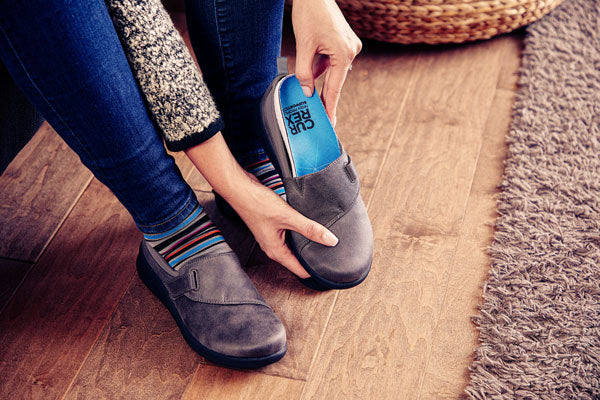
How CURREX Insoles Prevent Running Injuries
Most generic running shoe inserts only provide slight shock absorption with little cushioning, or they have stock arch support that ruins the integrity of the running shoe itself.
What makes CURREX insoles the best running insoles is how they complete your running shoes while providing highly customized support. Our scientifically proven design helps you avoid injury and takes your performance to the next level with:
- Dynamic Arch Technology™: Our Dynamic Arch Technology provides adaptable, anatomic arch support that engages the muscles of the foot, increasing sensory stimulation and returning stored energy at each toe off. This stimulation reduces stress on joints, ligaments, and tendons to help avoid injuries.
- Targeted Cushioning: Premium cushioning in the heel and toe delivers max rebound and propulsion while absorbing shock. Combined with our dynamic 3D support, our cushioned running insoles help minimize fatigue.
- Deep, Decoupled Heel: The decoupled heel in our running insoles and everyday insoles works with our dynamic arch support to provide the perfect fit, wrap, and lock, improving stability and fit.
- Customized Arch Support: To reduce excess motion in the shoe and keep the foot in its optimal biomechanical position, all CURREX insoles come in three different arch profiles for highly customized support.
Running insoles should improve the comfort of your running shoes without increasing stress underfoot. CURREX helps you avoid common running injuries with adaptable arch support, shock absorbing cushioning, and an optimal fit. Discover the best insoles for running or every day with the CURREX insole finder.
References:
Barraclough, A. (2023, May 10). 4 most common foot injuries sustained by runners. Runner’s World.
Lindberg, S. (2021, January 8) Common Foot Problems of Runners. Healthline.






